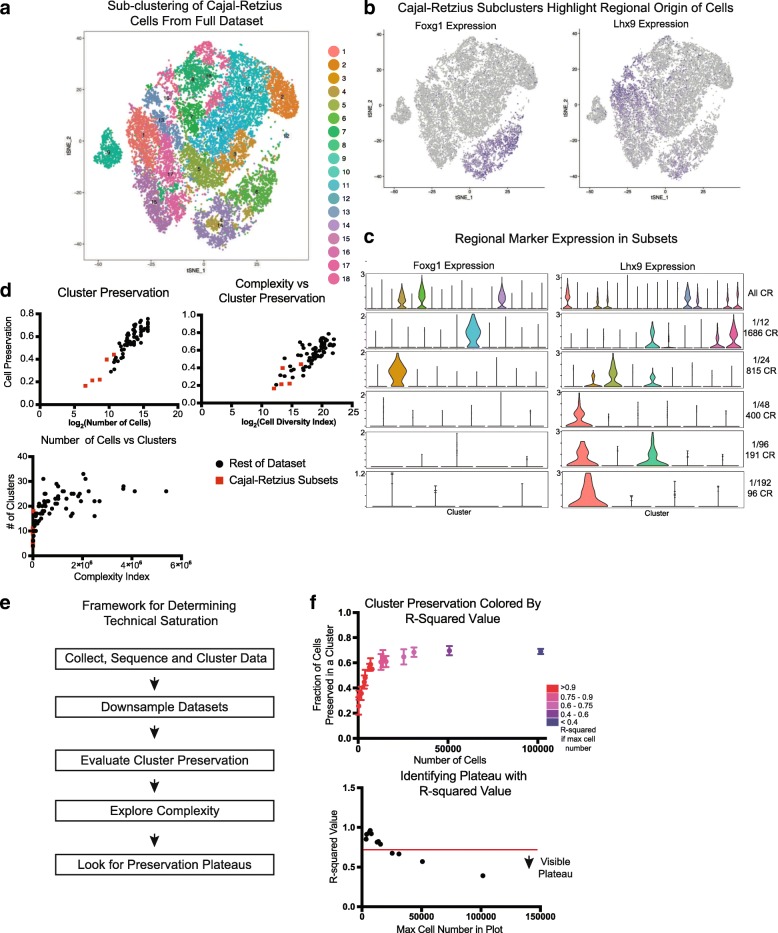Fig. 4.
Downsampling of Cajal-Retzius cells. a t-SNE plot depicting the iterative clustering result of all 20,550 Cajal-Retzius (CR) cells from the full dataset. b Regional origin is a well-studied classifier of CR subtypes, and two of these markers feature prominently in the iteratively clustered dataset: Foxg1 is enriched in three clusters while Lhx9 is enriched in seven clusters. c Violin plots of regional markers in the full datasets and CR subsets of downsampled datasets indicate that these markers are enriched in one more clusters up until 1/24 of the dataset is sampled, after which Foxg1 enrichment is diluted across multiple clusters. Lhx9 enrichment is conserved to even the smallest downsampled subset. One subset for each downsampling is used. d Enrichment metrics of CR cells in the context of previously shown metrics indicate that informatically, saturation of this cell type has not yet been achieved. e Framework to evaluate if technical saturation has been achieved. f Examination of R2 values when incrementally decreasing the number of maximum cells used in the analysis shows that plateau emerges around an R2 value of 0.6

